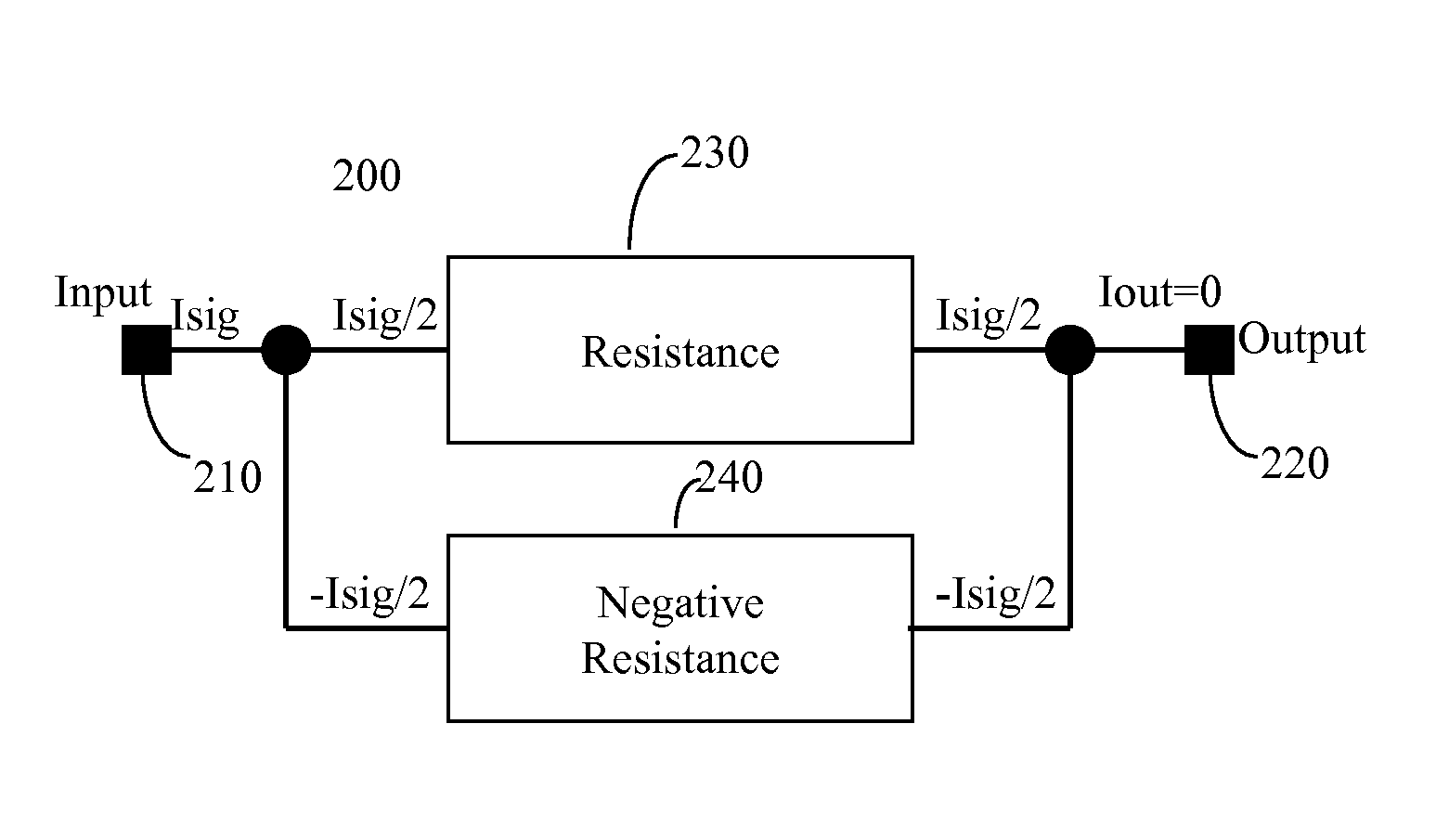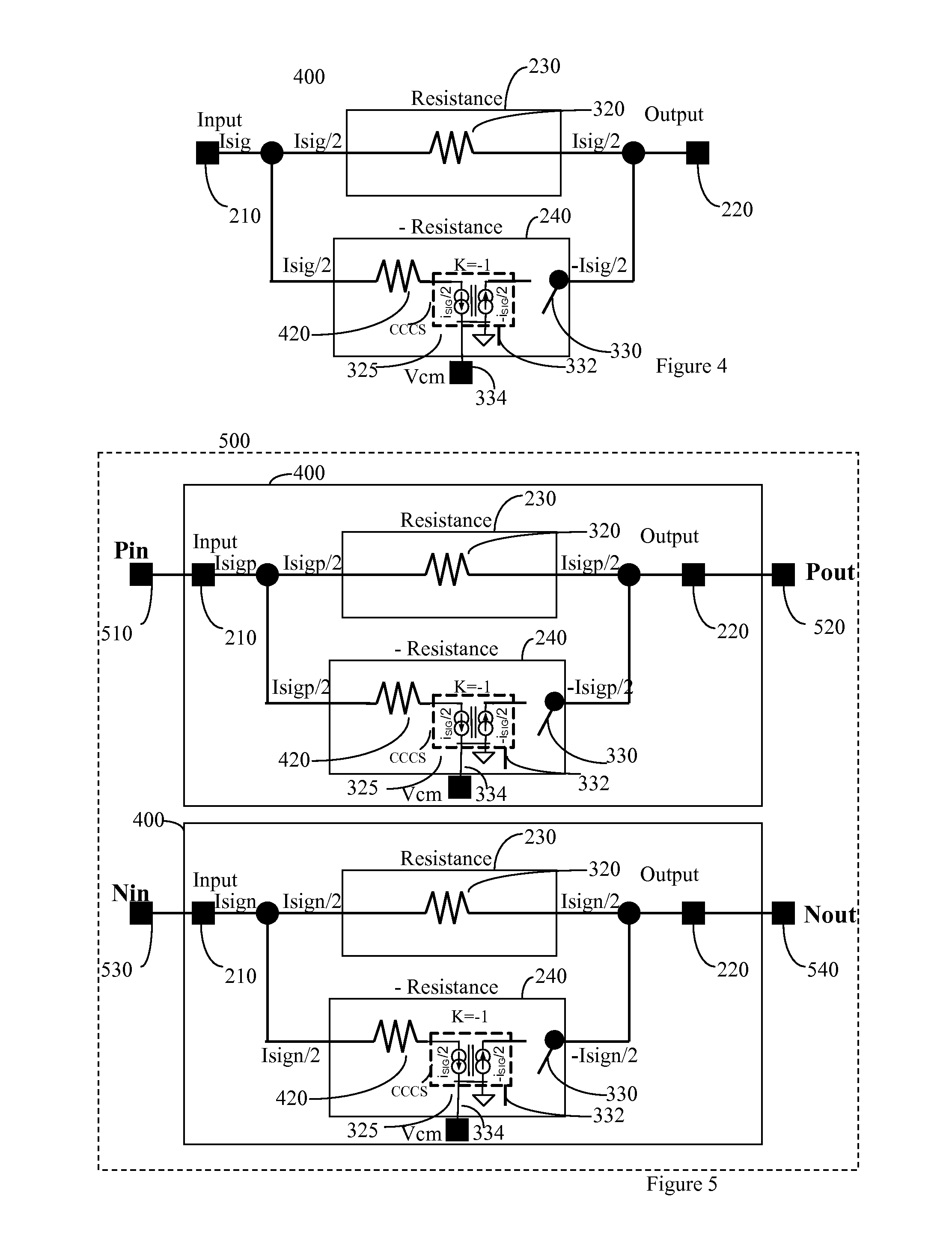Input cancellation circuit
a cancellation circuit and input technology, applied in the field of input cancellation circuits, can solve the problems of significant parasitic capacitance, significant distortion during normal operation, and reduce the bandwidth of the input circui
- Summary
- Abstract
- Description
- Claims
- Application Information
AI Technical Summary
Problems solved by technology
Method used
Image
Examples
Embodiment Construction
[0016]A system and method is provided for effectively isolating an input from a circuit. FIG. 2 shows a block diagram of a single ended isolation method in accordance with an embodiment of the invention. An input 210 is coupled to an input resistance 230 and a negative resistance 240. The outputs of resistance 230 and negative resistance 240 are coupled to output 220. By making the negative resistance path 240 substantially equal in magnitude to the resistance 230, the signal at input 210 is effectively cancelled. For example, the current through resistance 230 Isig / 2 and the current through the negative resistance 240 Isig / 2 is equal but opposite in direction. Therefore, the current at the output 220 is 0, thereby effectively canceling the signal at input 210. These relationships are summarized by the following equations:
[0017]Iout=VInput-VOutputR-RR-R=-R×RR+(-R)IfR=-R❘then,R-R=∞,andIout=0
[0018]As illustrated in FIG. 4, the input resistance 230 may comprise a resistor 320....
PUM
 Login to View More
Login to View More Abstract
Description
Claims
Application Information
 Login to View More
Login to View More - R&D
- Intellectual Property
- Life Sciences
- Materials
- Tech Scout
- Unparalleled Data Quality
- Higher Quality Content
- 60% Fewer Hallucinations
Browse by: Latest US Patents, China's latest patents, Technical Efficacy Thesaurus, Application Domain, Technology Topic, Popular Technical Reports.
© 2025 PatSnap. All rights reserved.Legal|Privacy policy|Modern Slavery Act Transparency Statement|Sitemap|About US| Contact US: help@patsnap.com



